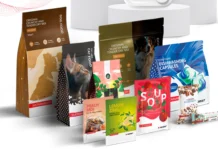Condot Systems displayed VDP (variable data printing) with security printing at Printpack India and received a good response from industry visitors. “Many VDP clients are now interested in print and verification with security needs and specialized software integrations for authentication for personalization and consumer protection in a brand loyalty program, which astounded us,” said Jigish Chiniwala of Condot Systems.
The company’s main display concept was inkjet-based variable data printing with verification and authentication. “We want to convey the message that VDP printing without security is useless,” he added.
Customers can use Condot solutions at a resolution of 600 x 600 dpi on the Bobst folder gluer, on newspaper web offset presses running at speeds up to 350 meters a minute. The company offers print and verification at these high resolutions and speed and dpi which it claims no Indian and global company can do.
The company’s applications are attractive in situations and products where there are substantial losses or harm by counterfeiting. These include tax tickets, university question and answer booklets, certificates, other applications, and solutions for the packaging sector on labels and cartons.
“IT solutions, that is hardware and software are challenges for many companies as their readiness, or in-house infrastructure are in question. However, in the traditional marking and batch coding or VDP printing, there is no challenge. But when we talk about track and trace, serialization, and authentication, we still face challenges at different levels of awareness, budget, and the willingness to resolve the issue. Sometimes we feel we are ahead of the times for the local market. For security printing, we need to educate the personnel in many companies. We are proceeding surely, slowly, and gradually, we will be successful,” said Chiniwala.
Chinwala says, there is a technological shift, with many digital presses available and others trying to develop hybrid presses combining the traditional analog units with digital for short-run requirements. One sense is that personalization, authentication, and verification are key value adds for the Indian printing and packaging industry. “An upcoming trend is the short-run digital press and there will be a demand to find out and question spurious suppliers so digital security printing will be a new demand shortly,” he added.
The company faced supply chain issues during the Covid-19 pandemic, but these did not cause significant disruptions since it was a supplier for track and trace, and coding and marking in pharma. “The Indian market is growing very fast and very competitively. It is now providing volumes but needs to be more quality-centric, which is lacking,” concludes Chiniwala.











